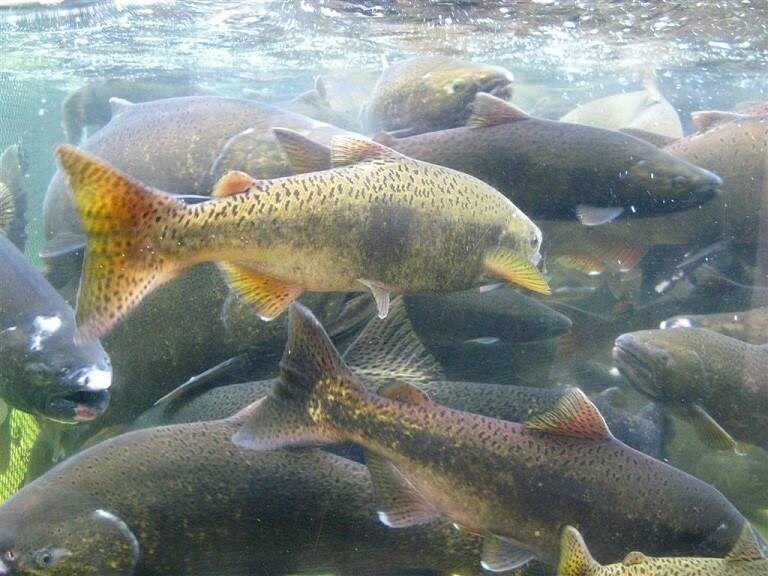It has been yet another tough year for B.C. salmon and the communities that rely on them.
Four years of drought have lowered water levels and raised temperatures in the province’s rivers and streams.
The ongoing impacts of repeatedly low snowfall and warmer-than-average temperatures have meant glaciers throughout B.C. have been unable to recharge and store historical amounts of ice that would melt, release and cool streams during the year’s hottest, driest months.
Low, drought-driven water levels can block salmon from spawning areas and expose them to predators. Overly warm water can reduce the fishes’ ability to spawn and make them vulnerable to illness.
The repeated years of extensive wildfires that the B.C. Interior has experienced compound the challenges. Burnt forests lead to increased erosion and more ash and debris flowing into creeks and decrease the flood-mitigating effects that healthy, growing, green forests provide.
The destabilized soils of burnt hillsides also mean more landslides, which have direct impacts on salmon.
The July 30 slide first choked the Chilcotin River, then scoured its bottom and banks, and those of the Fraser downstream, when the river burst through the debris.
Of course, we won’t see the full effects of this year’s challenges until 2028 and 2029, when the salmon that hatched this past spring finish their four-year migration cycle and the young of the salmon that are spawning in B.C. right now return from their epic ocean journeys.
We are seeing the results of past years’ trials in the 2024 salmon returns.
According to the latest State of Salmon report, by B.C.-based non-profit Pacific Salmon Foundation, declines in Pacific salmon abundance are widespread across both B.C. and the Yukon.
The report summarizes the state and abundance trends for each species of salmon, including steelhead, in nine major salmon-bearing regions, based on data collected by researchers and community members in the field, including First Nations fishers and guardians.
In more than 70 per cent of the fish populations in 41 region-species combinations, the number of salmon spawning is reported to be below the long-term average.
Chum experienced the steepest recent declines of the six species, with the number of spawning chum below the long-term average in every assessed region.
Overall, steelhead — which have been falling off for years —have the lowest total numbers in all samples, and the number of spawning steelhead are also below the long-term average in all assessed regions.
Northern regions saw the most widespread declines. Most salmon species in northern B.C. as in the Yukon are well below the long-term average in terms of number of spawning fish, total fish abundance, or both.
Some bright spots emerged, however. Pink salmon are doing better than other species, with the number of fish returning to spawn above the long-term average in four out of seven regions.
Some regions also show signs of recovery from recent lows. Coho abundance in the Fraser was above the long-term average for the first time in decades, and the number of spawning Chinook in the Fraser and in Vancouver Island and mainland inlets has also beat the historic averages for those regions.
These results provide hope that declines can be stemmed and populations rebuilt if given the opportunity.
We’ve known for years that B.C.’s salmon are in trouble. The Committee on the Status of Endangered Wildlife in Canada deemed the Interior Fraser’s coho threatened as of 2016, Okanagan Chinook endangered as of 2017, and more than half of the sockeye populations in the Lower Fraser to be endangered, threatened or of special concern in 2017.
Given the number and extent of difficulties facing salmon in B.C. and off its coast, that any at all manage to hatch, make it down river and then return several years on to spawn is remarkable.
I suspect if humans faced similar constant life-threatening pressures, many of us would throw in the towel, change occupations or strike out for more congenial environments.
The small number of people who appear on The Amazing Race, Gladiators and other similar fitness and endurance TV shows choose those experiences, while the rest of us watch (or not) from the comfort of our recliners.
Salmon have neither option. To survive and produce the next generation, they must live the fishy version of Ninja Warrior.




